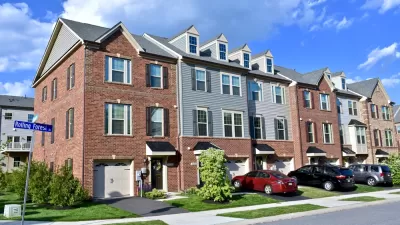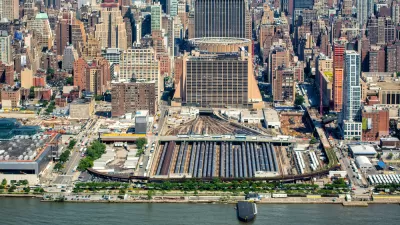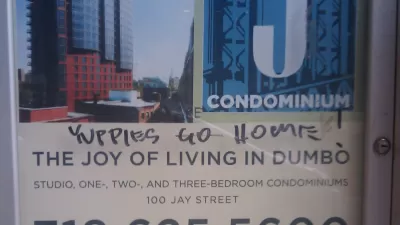The housing market in NYC has seen a 98.5 percent increase in luxury condo construction since last year. Market experts are concerned there is not enough demand to meet supply, causing developers to build upper to middle-income housing instead.
As Julie Satow reports for The New York Times, the number of listed luxury apartments for sale in Manhattan during the past year has doubled (up from 742 units to 1,473 units). These luxury apartments are priced at the top 10 percent of the market, with listings for $3.25 million or higher. The saturated luxury condo market does not have enough interested buyers willing to pay for these expensive purchases.
As a result, writes Satow, "of this growing supply at the top end of the market, developers are packing up their tools and pulling out, while some others are reconfiguring their projects to focus on smaller units with lower prices. If the trend holds, the supply of condos coming to market in two to three years will look very different from what is for sale now — with many fewer apartments priced at $10 million and up."
Developer Stuart N. Siegel of Engel & Völkers New York Real Estate also echoed that the market is in the beginning of a transitional state. According to him, we are currently moving from unfettered pricing, and can expect a healthier marketplace in the future with greater discipline in pricing and valuation.
FULL STORY: Luxury Condos: Dialing It Down

Planetizen Federal Action Tracker
A weekly monitor of how Trump’s orders and actions are impacting planners and planning in America.

Chicago’s Ghost Rails
Just beneath the surface of the modern city lie the remnants of its expansive early 20th-century streetcar system.

San Antonio and Austin are Fusing Into one Massive Megaregion
The region spanning the two central Texas cities is growing fast, posing challenges for local infrastructure and water supplies.

Since Zion's Shuttles Went Electric “The Smog is Gone”
Visitors to Zion National Park can enjoy the canyon via the nation’s first fully electric park shuttle system.

Trump Distributing DOT Safety Funds at 1/10 Rate of Biden
Funds for Safe Streets and other transportation safety and equity programs are being held up by administrative reviews and conflicts with the Trump administration’s priorities.

German Cities Subsidize Taxis for Women Amid Wave of Violence
Free or low-cost taxi rides can help women navigate cities more safely, but critics say the programs don't address the root causes of violence against women.
Urban Design for Planners 1: Software Tools
This six-course series explores essential urban design concepts using open source software and equips planners with the tools they need to participate fully in the urban design process.
Planning for Universal Design
Learn the tools for implementing Universal Design in planning regulations.
planning NEXT
Appalachian Highlands Housing Partners
Mpact (founded as Rail~Volution)
City of Camden Redevelopment Agency
City of Astoria
City of Portland
City of Laramie





























